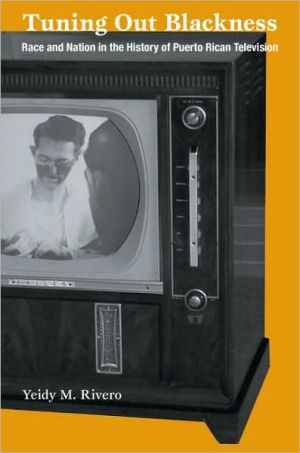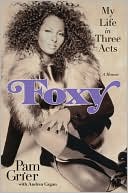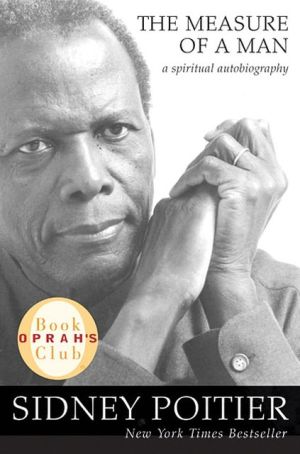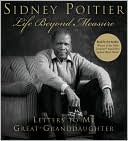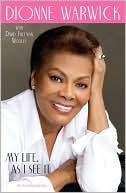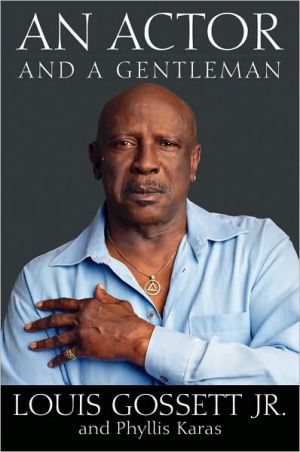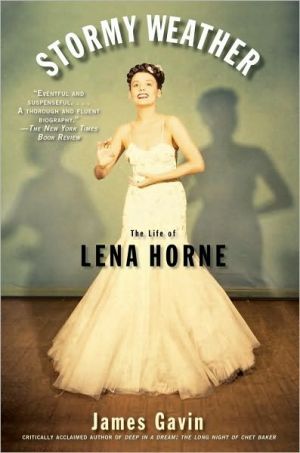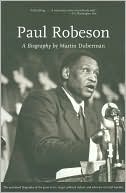Tuning Out Blackness: Race and Nation in the History of Puerto Rican Television
Tuning Out Blackness fills a glaring omission in U.S. and Latin American television studies by looking at the history of Puerto Rican television. In exploring the political and cultural dynamics that have shaped racial representations in Puerto Rico’s commercial media from the late 1940s to the 1990s, Yeidy M. Rivero advances critical discussions about race, ethnicity, and the media. She shows that televisual representations of race have belied the racial egalitarianism that allegedly...
Search in google:
A look at how blackness is represented in entertainment programming in Puerto Rico.
Tuning Out Blackness\ RACE AND NATION IN THE HISTORY OF PUERTO RICAN TELEVISION \ \ By YEIDY M. RIVERO \ DUKE UNIVERSITY PRESS\ Copyright © 2005 Duke University Press\ All right reserved. \ ISBN: 978-0-8223-3531-3 \ \ \ \ Chapter One\ Caribbean Negritos Ramón Rivero, Blackface, and Black Voice in Puerto Rico\ Diplo was the sentimental negrito who possessed the "Cuban wit" and used his ingenuity for personal gain. Julio Cordero-Avila, El Mundo, May 6, 1973\ From the late 1930s through the 1950s, Puerto Rico's media representations of blackness were located in an ambiguous geographical space. While some blackface and black voice characters addressed local political, cultural, and social issues, negritos and negras were mostly described as caribeños/as (Caribbean), not as Puerto Ricans. This black Caribbeanness can be traced to Puerto Rican and Cuban cultural, social, and business relations. The influence of Cuba's Bufo theater tradition and its negrito characters as well as the pattern of buying radio scripts from Cuba were key in Puerto Rico's media translations of a Caribbean negritud. In addition to these dynamic exchanges, one should also consider the location of blackness on both islands.\ Similar to Puerto Rico's 1930s ideological reconceptualization of la gran familia puertorriqueña, Cuba's postin dependence nation-building stages created a discourse ofcubanidad (Cubanness) that, through the mestizaje ideology, merged African and Spanish cultural elements. Although this ideological conceptualization of the Cuban identity redefined and integrated some Afro-Cuban traditions, it also positioned the Spanish culture and whiteness at the top of the racial and cultural hierarchy. Therefore, Puerto Rico's media representations of blackness articulated hegemonic racial discourses, which situated negros and negras as marginal gendered Others within and across both Puerto Rico's and Cuba's colonized and neocolonized sociocultural spaces.\ While locally produced radio and television shows in Puerto Rico during the 1940s and 1950s depicted black voice and blackface Caribbean negra characters, these earliest racialized representations-unlike the negritos-did not become iconic cultural symbols of Puerto Ricanness. Certainly, the suffering, dedicated, and submissive black voice and blackface negra servants such as mamá Dolores in the Puerto Rican adaptation of the Cuban radio-novela and subsequent telenovela El derecho de nacer, and la negra Balbina in the local adaptation of the Cuban radionovela Sierra negra were highly popular characters in Puerto Rico during the duration of these programs. However, in contrast to the locally written and locally produced comedy shows that depicted black voice and blackface Caribbean negritos, these radio-novelas and telenovelas did not address Puerto Rico's political, cultural, and social conditions, and more importantly, they did not criticize the island's political and class systems. For example, Nora Mazziotti notes that during the early stages of radionovela and telenovela production in Latin America and the Spanish Caribbean, nearly identical scripts were produced in various countries. Although radionovelas and telenovelas and their negra characters were not exclusively Caribbean cultural products (after all, El derecho de nacer was produced in countries such as Mexico, Brazil, and Argentina), they probably became popular in Puerto Rico for a number of reasons.\ First, the negra characters were part of successful radionovelas or telenovelas. As several scholars have argued, from the early stages of commercial radio and television in Latin America and the Spanish Caribbean, radionovelas and telenovelas became some of the most culturally and commercially appealing media artifacts in the region. These cultural products, as well as Mexican movies and musical expressions such as mambo, bolero, and tango, surpassed the local significations and created what Jesús Martín-Barbero refers to as "a process of sentimental integration" that generated a transnational Latin American and Spanish Caribbean cultural space of production and consumption.\ Second, in Puerto Rico the radionovela and telenovela scripts (all of which were purchased in Cuba before the 1959 Revolution) underwent some linguistic transformations to accommodate Puerto Rico's vernacular language and geographical locations while maintaining the story line of the original text. Third, the black voice and blackface Caribbean negra characters such as mamá Dolores and la negra Balbina were performed by a well-respected and locally famous white Puerto Rican radio and theater actress (Mona Marti). Finally, in terms of racial signification, these scripts positioned black women as content with their class and racial position in the telenovela's fictional social space. Although the negra characters seemed to be integral to the narrative and were constructed as sacrificing heroines, they never challenged their racialized, gendered, or class status. What is more, these characters apparently never faced any form of systemic racial oppression. Instead, it appears that the source of subjugation for the negras was never the system, but rather the actions of an immoral individual. Considering this racialized construction in the context of Puerto Rico in particular and Latin America in general, the Caribbean negras could be read as a reaffirmation of the ideology of racial democracy that informs the mestizaje discourse. In other words, racism was located as a personality or a moral trait instead of as an intertwined and endemic cultural, political, social, and economic practice.\ As I explain in chapter 2, these racialized and gendered constructions, and the use of white actresses in blackface to represent black maids in telenovelas continued until the late 1970s in Puerto Rico. However, what emerged in the late 1930s and remains part of Puerto Rico's contemporary televisual culture is the blackface and the black voice negrito character. The negritos, and specifically Ramón Rivero's characters Diplomacia and Calderón, embodied a Caribbean mediated blackness and became an ambivalent symbol of the oppressed sectors of the population.\ From the late 1930s until his death in 1956, Ramón Rivero's blackface and black voice negrito characters, Diplomacia and Calderón, became one in Puerto Rico's popular culture, merging the actor's creations and his public and private personae into a single signifier: Diplo. With Rivero, blackface and black voice in Puerto Rico became synonymous with the voice of the marginal sectors of the population. It was a symbiotic relationship: Rivero symbolized el pueblo (the people) and el pueblo venerated Rivero.\ Ramón Rivero (Diplo) is considered one of the most important media professionals in the history of Puerto Rico. As a theater, radio, film, and television actor, producer, scriptwriter, songwriter, and director, he has become a legend. From the early stages of his theater and radio career to contemporary newspaper stories, radio, and television shows, Rivero has been characterized as a "very talented and highly professional actor," a "Divo," "a great colleague and human being," a "symbol of the Puerto Rican people," and a "true Puerto Rican who loved his island deeply." A self-identified nacionalista (nationalist) and, later, an independentista (pro-independence advocate) during a transitional political period when, as I will further explain, U.S. and local law enforcement officials prosecuted any mobilization against the U.S. colonial power, Ramón Rivero was beloved by audiences, respected by intellectuals, and admired by the media professionals of his time.\ One important element of Rivero's public persona was his use of star status and economic power for humanitarian efforts. He raised money for cancer research, financially assisted his unemployed theater colleagues, and reportedly drove around poor barrios in Puerto Rico giving away food to impoverished children and the elderly. In addition, Rivero was one of the first actors to perform in New York City for the Puerto Rican community, and during World War II he was invited by the U.S. State Department to present his act for the Puerto Rican soldiers stationed overseas. In terms of political activism, Rivero was a key figure in the 1951 El gremio de prensa, radio y teatro (the Newspaper, Radio, and Theater Union) labor strike against Angel Ramos, the owner of WKAQ radio (the radio station where Rivero did most of his professional work). Moreover, despite the threat of possible censorship or the potential of becoming an outcast, Rivero was open about his political ideology, declaring, "I believe in the independence of Puerto Rico as I believe in God."\ When analyzing the celebrity status of Ramón Rivero one needs to consider not only his public and private personae, but also the discourses that have constructed Puerto Rico's cultural nationalism. In the descriptions of Rivero, particularly after his death in 1956, his blackface and black voice negrito characters are submerged in discourses of Puerto Ricanness. The nation becomes the center of these narrations, creating a nostalgic feeling not only about the untimely death of Rivero but, more broadly, about Puerto Rico's past. Regardless of the stereotypical representations of blackness that are never problematized, the narrations focus on a time when comedy did not rely on sexual innuendos. What is more, they also center on the fact that Ramón Rivero made people laugh during the difficult economic and political transitional periods of the 1940s and 1950s.\ As Eliseo Colón-Zayas notes, Ramón Rivero and his comedy re-created "the popular and the grotesque," incorporating the body of el pueblo into political, social, and cultural discourses. Nonetheless, Colón-Zayas's analysis of Rivero downplays the colonial, "complex, ambivalent, and contradictory mmode of representations." More than simply the body of the people, Rivero's negritos are complicated and multilayered symbols. Through his theater troupe (La Farándula Bohemia), plays, vaudeville acts, radio and television shows, blackface and black voice became protected political masquerades for criticizing U.S. colonialism, the Puerto Rican government, and the oppression of the working class. With Rivero's characters, negritos were depicted as the anti-heroes, as illiterate and lazyand yet street smart, conniving, and sometimes endowed with class or political consciousness as Caribbean or Puerto Rican citizens who, by way of their cleverness, were able to trick everyone-especially those who possessed cultural, economic, political, and symbolic power.\ In the following pages I argue that Rivero's popularity as a blackface and black voice performer operated within three intertwined discursive spaces: the translation of Cuba's Bufo negrito catedrático (a blackface character, pretentious) type as a symbol of anticolonialism and political satire, the actor's left-wing nationalistic political persona and social activism, and the re-articulation of la gran familia puertorriqueña hegemonic discourse. I suggest that these interlaced political, social, cultural, and racial significations regularized the performance of blackface in Puerto Rico's televisual space. Indeed, Rivero's complex constructions of blackface blackness have been transformed over the decades. Yet his mythical position in the national imaginary, his construction of blackface as a safe space for satire, and Puerto Rico's discourse of a racially democratic nation have been used as points of reference for the ongoing representation of blackface in local programming.\ To trace the emergence of blackface and black voice in Puerto Rico, I first present a historical background of Cuba and Puerto Rico's cultural, political, and business connections. Using Cesar Salgado's concept of cultural anastomosis, I position mediated blackness in Puerto Rico as part of the Cuba-Rican socio-cultural space. Following this historical overview, I focus on Cuba's Bufo theater and the 1868 bufomanía, the adaptation of this genre by nineteenth-century Puerto Rican playwrights, and Rivero's revision of Bufo's negrito catedrático type. I pay special attention to Rivero's radio show El tremendo hotel, that served as the basis for his television shows La taberna India and La farándula Corona.\ In this chapter I contend that although Rivero's performances created a space for criticizing Puerto Rico's colonialism and the oppression of the working class, his representations of "blackness" became racial signifiers that normalized "whiteness" in Puerto Rico's radio and televisual spaces. Consequently, after Rivero's death in 1956, the Caribbean negritos became buffoonish, racialized figures who reaffirmed the hegemonic whiteness not only of the Puerto Rican nation but also of the emerging post-1959 Cuban migrant community in Puerto Rico.\ Last, I am directly and indirectly foregrounding the pressing need for historical and cultural contextualization of the performances of black voice and blackface across multiple national contexts. Although one can trace similarities among, for example, black voice and blackface in Puerto Rico, Cuba, and the United States, the ideological meanings inscribed on these cultural artifacts responded to specific discursive formations. Simply put, one cannot generalize about black voice and blackface in Puerto Rico (or, for that matter, in other parts of the world) and categorize these racial constructions as mere copycat versions of U.S. minstrelsy. Rather, it is imperative to perform in-depth analyses of the multiple cultural exchanges, performers, and political, national, and racial ideologies that informed local and global black voice and blackface "blackness." Only in this way can one begin to understand the ways in which mediated cultures reproduced, challenged, or complicated the positionality of black citizens across various national scenes and moments in history.\ The CubaRican Space\ In reference to Puerto Rico and Cuba's combined and ongoing struggles to obtain their independence from Spain, the Puerto Rican poet Lola Rodríguez de Tio wrote in 1893 that "Cuba and Puerto Rico are the two wings of a single bird." Rodríguez de Tio's verse epitomizes the interconnections of these two nations not only in terms of their colonial pasts but also in terms of contemporary invasions of their cultural and social arenas. A revision of these transcultural flows and the creation of what Cesar Salgado calls the CubaRican space crystallizes the construction of Caribbean blackness that informed Puerto Rico's media from the late 1930s to the 1950s.\ Salgado uses the analogy of the heart's circulation in the human body to map the colonial relationships among Spain and the United States and Cuba and Puerto Rico. By locating the heart as the colonial metropolis, he argues that we can distinguish three sanguineous circulations between and across the colonial hearts and the continental body: the arterial flow, the venous flow, and the anastomosis flow. The arterial flow relates to political infusions of ideologies and the mobilization of armies and colonizers into the continental body. The venous flow conveys the economic exploitation of territorial resources, people, and the ongoing migrations of colonized or neocolonized subjects to the metropolis. Finally, there is the circulatory process of anastomosis, which relates to the lateral, capillary, and semi-independent streams across the continental body parts.\ Salgado employs the process of anastomosis to locate the ongoing cultural, social, economic, and political influxes between Puerto Rico and Cuba that are interconnected to each other and to Spain and the United States. By categorizing this relationship as CubaRican, he positions Puerto Rico and Cuba as a third cultural region that is influenced by colonial or imperial powers but that maintains a distinctive cultural enclave. This symbolic third cultural space is presented in "discourses, populations, words, nightmares, utopias, gestures, movements, ornaments, and rhythms." The anastomosis flows and the CubaRican space are important elements for understanding the Cuban influences in Puerto Rico's commercial media and the performance of blackface.\ (Continues...)\ \ \ \ \ Excerpted from Tuning Out Blackness by YEIDY M. RIVERO Copyright © 2005 by Duke University Press. Excerpted by permission.\ All rights reserved. No part of this excerpt may be reproduced or reprinted without permission in writing from the publisher.\ Excerpts are provided by Dial-A-Book Inc. solely for the personal use of visitors to this web site. \ \
Introduction : translating televisual "blackness"11Caribbean negritos : Ramon Rivero, blackface, and black voice in Puerto Rico222Bringing the soul : Afros, black empowerment, and the resurgent popularity of blackface673The CubaRican space revisited1154Mi familia : a black Puerto Rican televisual family1475Translating and representing blackness185
\ From the Publisher“Tuning Out Blackness offers an astute and very well informed analysis of Puerto Rico’s unique ‘racial’ programming, which in turn provides a valuable look at the deep ambivalence at the heart of the country’s sense of national identity in the shadow of U. S. ideological and cultural power.”—Juan Flores, author of From Bomba to Hip-Hop: Puerto Rican Culture and Latino Identity\ “This book not only provides a cultural history of ‘blackness’ in Puerto Rican television, it also locates Puerto Rico as a critical blind spot in both Latin American and U. S. television studies, one that can offer new insights into the televisual representation of race, family, and nation.”—Chon Noriega, author of Shot in America: Television, the State, and the Rise of Chicano Cinema\ \ \
